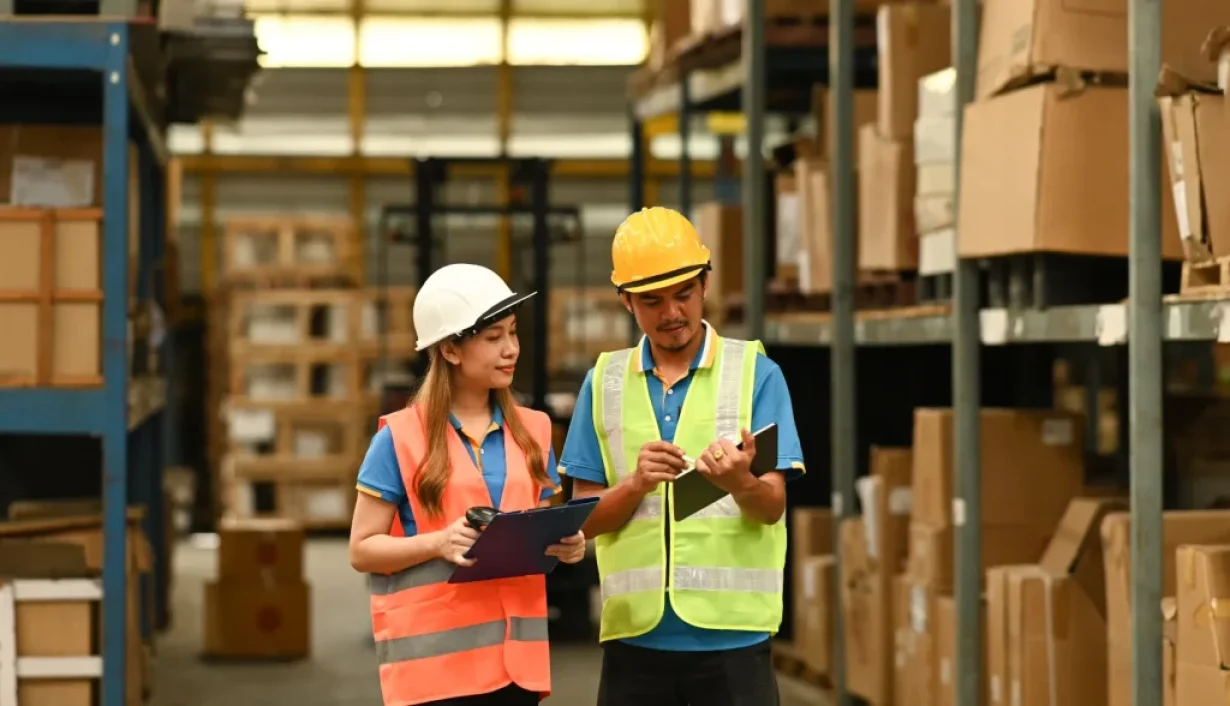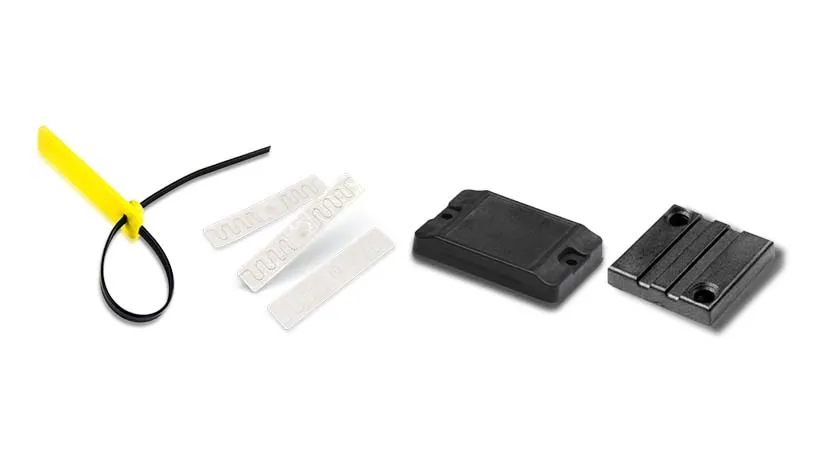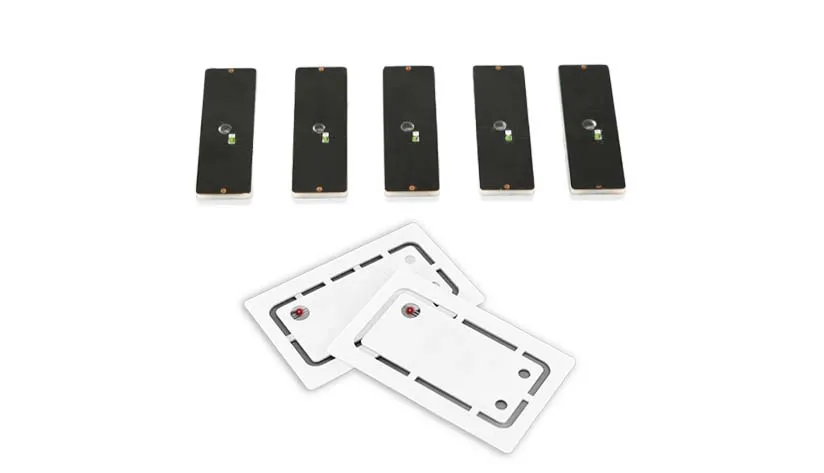
Smooth and efficient warehouse operations are what keep a solid, reliable logistics network running like clockwork. But many businesses still struggle with common issues like inaccurate inventory, human errors, security breaches, and operational delays. These problems not only disrupt warehouse efficiency but also increase overall logistics costs.
To keep up with the growing demand for faster and more precise packaging and delivery, modern warehouses are adopting RFID (Radio Frequency Identification) technology. RFID technology keeps revolutionizing logistics by reshaping the way businesses track, manage, and move goods throughout the supply chain. It improves inventory tracking, increases efficiency and transparency, reduces human error, and lowers costs. In this article, we’ll dive into how RFID works and why it’s a critical tool for modern logistics.
What is RFID?
RFID, short for radio-frequency identification, is a technology that uses electromagnetic waves to wirelessly detect and track objects. The setup has three key components: a compact tag with a built-in transponder, plus a signal receiver and an emitter. An RFID reader emits a radio signal that triggers the nearby tag to transmit its distinct identification number back to the system.
By adopting a proactive approach, companies can boost agility, cut down on excess inventory costs, and streamline daily operations for better performance.
How RFID Works in Logistics
To understand the impact of RFID, let’s break down its role in logistics step by step. As products come into the warehouse, an RFID scanner sends out a radio signal. When the tag is within range, it receives the signal and sends its unique ID back to the reader for processing.
These tags carry key details like product type, quantity, origin, and destination. This information is then uploaded into the Warehouse Management System (WMS), keeping inventory levels updated in real time.
As goods move through different zones in the warehouse—receiving, storage, picking, and shipping—RFID tracks every movement. This provides full visibility at each stage and eliminates the need for manual record keeping.

Benefits of RFID in Logistics
Let’s dive into why RFID is a total game-changer for warehouse and logistics operations.
Improve Inventory Management
RFID delivers precise, real-time inventory data. Unlike traditional systems, it eliminates the hassle of manual scanning and can instantly scan and identify multiple items at once, keeping your inventory updates live and accurate. This level of precision helps cut down on stockouts, overstocking, and misplaced items.
With RFID in place, managers get instant visibility into stock levels anytime they need it. This leads to smarter forecasting, smoother restocking processes, and improved inventory turnover.
Boost Operational Accuracy
Manual data entry often results in errors when tracking items or processing orders. RFID technology reduces human involvement by automatically logging every movement. This enhances order accuracy and significantly cuts down return rates caused by picking or shipping mistakes.
Enhance Logistics Efficiency
RFID lets you track assets in real time without needing a direct line of sight. It keeps tabs on product movement accurately and helps streamline your operations. When combined with a warehouse management system (WMS), it boosts efficiency in picking, packing, and logistics operations while drastically cutting down on manual labor costs.
Reduce Cost
While the initial setup costs for RFID are higher, it helps cut labor expenses, shrinkage, and handling errors. Over time, businesses recoup their investment through increased productivity and reduced operational costs.
Additionally, RFID safeguards high-value assets by preventing losses from misplaced inventory or theft with efficient asset tracking and management.
Enhance Logistics Transparency
One of the biggest challenges in logistics operations is maintaining real-time, up-to-date visibility into the transit status of goods. Traditional barcode systems rely on manual scanning, which creates inefficiencies and increases the likelihood of human error. By adopting RFID technology, organizations gain instant access to dynamic tracking data across the supply chain. This level of transparency streamlines workflows and enables quick responses to delays or unexpected disruptions.
Provide Data Insights for Decision-making
By harnessing the rich data collected from RFID technology, logistics teams can gain actionable insights to improve supply chain visibility and optimize operational strategies.
Advanced analytics platforms analyze past RFID data to identify usage trends, predict shifts in demand, and fine-tune inventory management strategies. By taking a proactive approach, companies can stay agile in the face of change, cut down on excess inventory costs, and boost performance across the board.
RFID Tags Used in Logistics
Picking the right RFID tag is crucial. Various types of RFID tags are specifically designed to meet unique environmental conditions and application needs.
RFID On-metal Tags
Take our Alien Higgs® 4 UHF RFID on-metal tags, for instance—they can withstand high temperatures, are IP68-rated, and deliver reliable tracking and inventory control on metal surfaces. Built tough for harsh environments, these tags ensure efficient asset management and streamline supply chain operations with their durable, high-performance design.
RFID Cable Tie Tags
RFID cable tie tags provide a practical solution for dependable asset tracking and identification. With their durable design and easy application, these tags are ideal for bundling cables, labeling equipment, and managing inventory in warehouse settings—streamlining logistics operations and enhancing overall efficiency.

RFID LED Tags
Our RFID LED tags combine tracking features with visual signaling to deliver real-time status updates and enhanced visibility in storage areas. This smart integration makes inventory management easier, boosts security, and dramatically speeds up item retrieval—especially in large or densely packed warehouses.

On-metal RFID Label
On-metal RFID labels are designed with specialized antenna structures or insulating materials to ensure reliable signal performance when used on metallic surfaces. These tags excel in applications like equipment monitoring, inventory management, and tool identification on or near metal assets. By leveraging on-metal RFID technology, businesses can boost tracking accuracy, optimize resource management, and gain greater visibility across their supply chain.
On-liquid RFID Label
On-liquid RFID labels allow for real-time monitoring of liquid goods during storage and transit, boosting accuracy in inventory management. These tags are especially valuable in operations dealing with large volumes of liquid products, helping to reduce human error and maintain precise, up-to-date stock data. By adopting on-liquid RFID technology, businesses can track every stage of a product’s lifecycle—from manufacturing and bottling to warehousing and delivery—gaining better control and efficiency throughout their logistics processes.
Conclusion
RFID isn’t some futuristic idea anymore—it’s a tried-and-true solution for modern logistics. With its power to streamline inventory management, improve accuracy, and provide real-time visibility, RFID keeps businesses ahead in today’s fast-moving market. Whether you’re upgrading your current logistics system or building one from scratch, our team is here to help you find the perfect RFID solution tailored to your needs. Get in touch with us today and see how smarter logistics can start with just one tag!
FAQ
What is the future of RFID in logistics?
With growing demands for real-time visibility, automation, and supply chain transparency, RFID delivers scalable solutions that far surpass traditional barcode systems. Future trends point to integration with AI and IoT platforms, paving the way for predictive analytics, autonomous inventory updates, and real-time decision-making. As RFID tags get cheaper and software platforms more advanced, their role in streamlining logistics—from warehouse operations to last-mile delivery—is only going to grow.
Can I integrate RFID with my existing warehouse management system (WMS)?
RFID technology integrates with your existing inventory management systems. Many RFID solutions are built to work seamlessly with popular inventory software, ensuring hassle-free integration. This means the data generated by RFID systems can automatically flow into your current platform, enhancing visibility and making inventory tracking and analysis a breeze.
Is RFID reliable in harsh warehouse environments?
Industrial-grade RFID tags are built to withstand harsh conditions like extreme heat, humidity, dust, and interference from metal. Our specialized tags—such as on-metal RFID tags, on-metal labels, and on-liquid labels—are designed for durability and peak performance in tough environments. When combined with rugged RFID readers and fine-tuned systems, RFID offers a rock-solid solution for tracking assets and inventory, even in the most demanding warehouse settings.

Impinj Monza® 4QT ABS and Nylon RFID Cable Tie Tag

Flexible On-metal Impinj Monza® R6 TPU UHF RFID Tag | 90x18mm

Chemical Resistant NXP UCODE® 8 PEEK RFID On-Metal Tag | 41×29 mm


RFID Antenna UHF
15-Meter Cable for UHF RFID Fixed Reader
UHF Tag
4″x2″ 860-960MHz UHF RFID Label RFID M4D
UHF Tag
4″x4″UHF RFID Label Alien H3 | ISO18000-6C
RFID Antenna UHF
5-Meter Cable for UHF RFID Fixed Reader
HF Card
ABS RFID KEY-FOB Tag RFID Classic 1K
HF Card
ABS RFID KEY-FOB Tag RFID Classic 4K
HF Card
ABS RFID KEY-FOB Tag RFID Ultralight C
HF Tag
ABS RFID KEY-FOB Tag RFID Ultralight EV1
LF Card
ABS RFID KEY-FOB Tag ATA5577
LF Card
ABS RFID KEY-FOB Tag EM4200
HF Card
ABS RFID KEY-FOB Tag EM4305
HF Card
ABS RFID KEY-FOB Tag RFID TAG 213